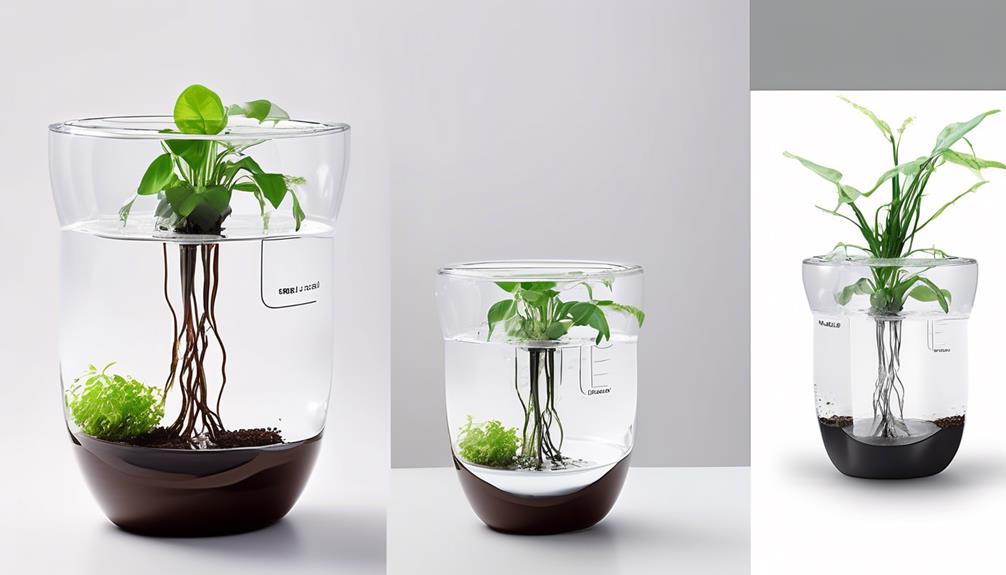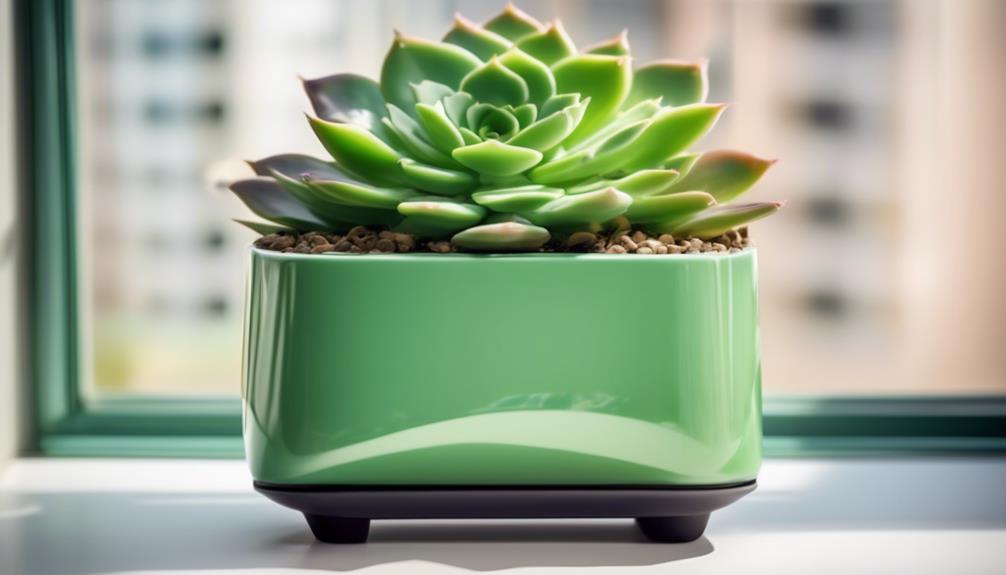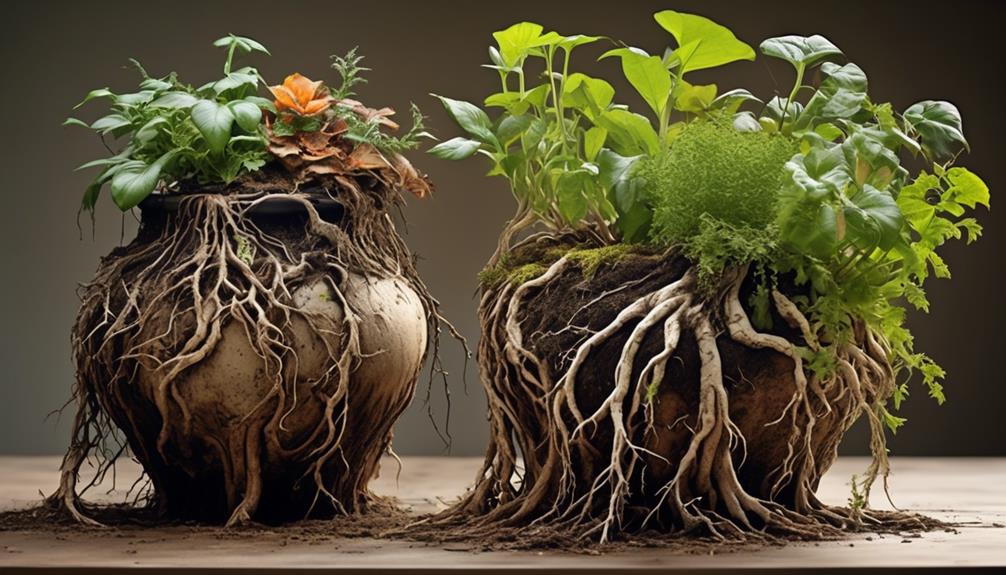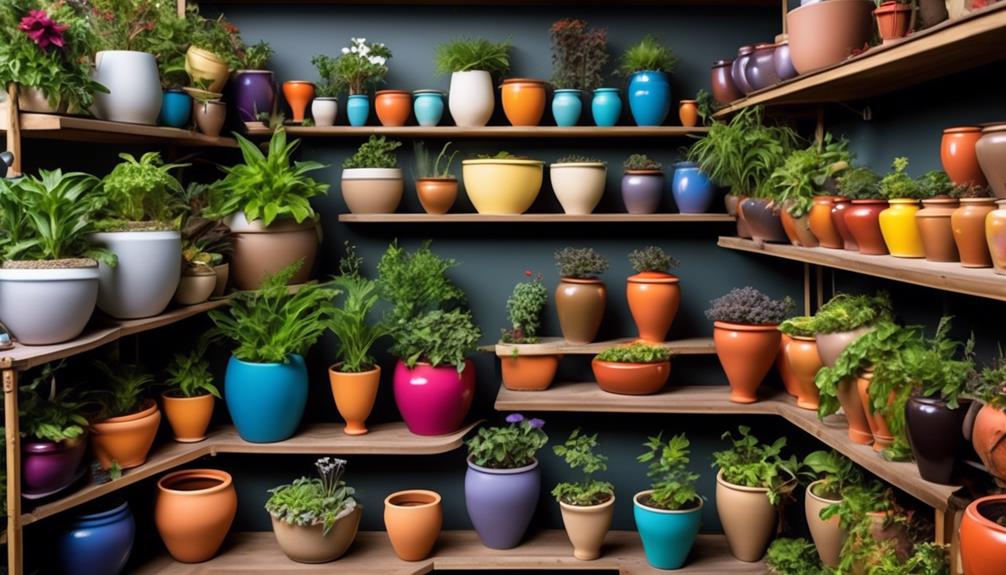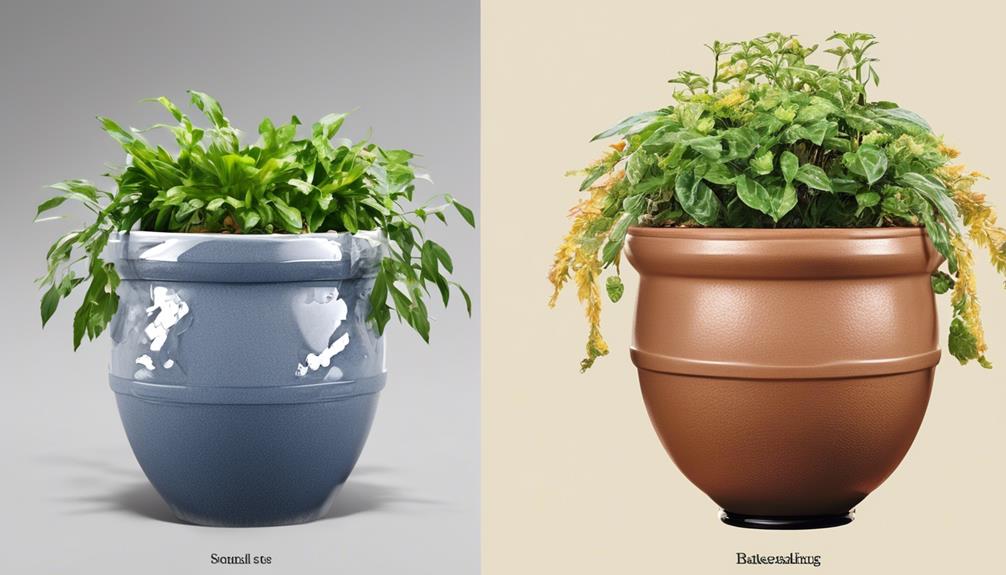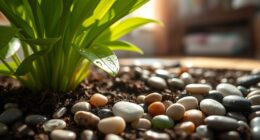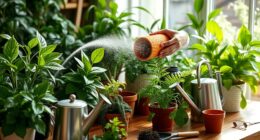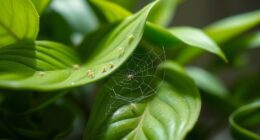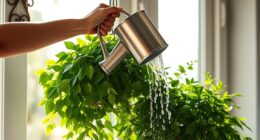Have you ever found yourself forgetting to water your plant friends, not just once but maybe multiple times? Don’t worry, you’re not alone. Even the most passionate gardeners can make mistakes. Luckily, there’s a game-changing solution: self-watering planters. They are like superheroes for your plants, coming to the rescue.
Have you ever wondered how these miracle pots actually work? Well, prepare to be amazed as we unravel the mystery behind their ingenious design and functionality.
Get ready to uncover the secrets of how these pots manage to keep your plants thriving without constant attention.
Key Takeaways
- Self-watering plant pots automatically provide moisture to the soil, preventing overwatering and underwatering.
- They utilize a reservoir system and capillary action to deliver water to the roots and maintain optimal moisture levels in the soil.
- The wick in the self-watering mechanism acts as a conduit for water from the reservoir to the soil, promoting healthy root growth and preventing waterlogging.
- Self-watering pots are efficient, reliable, and convenient, reducing water wastage and enhancing plant health and vitality.
Self-Watering Mechanism
The self-watering mechanism in plant pots automatically provides moisture to the soil, ensuring consistent hydration for the plants. This mechanism operates through a reservoir that holds water beneath the soil.
A wicking system, typically made of fabric or other porous material, draws the water upward from the reservoir into the soil, maintaining a consistently moist environment for the plant roots.
This innovative design not only simplifies the watering process but also plays a crucial role in regulating the watering frequency, preventing both overwatering and underwatering, which are common issues in traditional pot watering.
Reservoir System
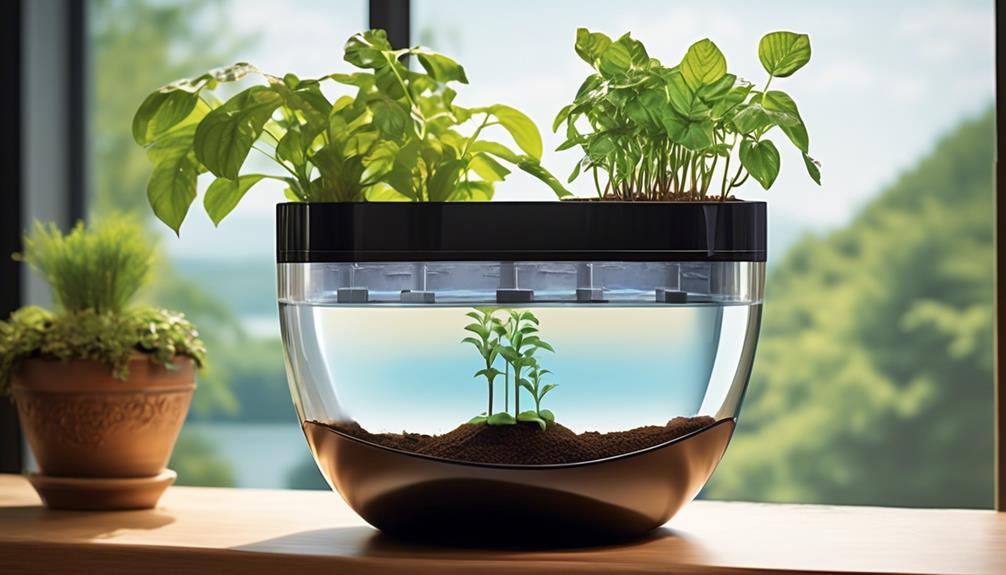
Drawing water from the reservoir into the soil, the wicking system in self-watering plant pots maintains a consistently moist environment for the plant roots. The reservoir system plays a crucial role in providing a continuous supply of water to the plant, ensuring optimal hydration and growth.
Here's how the reservoir system works:
- Capillary Action: The reservoir, located beneath the soil, utilizes capillary action to deliver water to the roots. This process involves the movement of water through small spaces in the soil and the wick, ensuring a steady supply of moisture to the plant.
- Water Storage: The reservoir is designed to store excess water, preventing overwatering and water wastage. This storage system allows the plant to access water as needed, promoting efficient water usage and reducing the frequency of manual watering.
- Root Accessibility: The design of the reservoir ensures that the plant roots can access water as required, promoting healthy root development and overall plant hydration.
- Moisture Regulation: The reservoir system helps regulate moisture levels in the soil, preventing waterlogging and creating an ideal environment for plant growth.
Capillary Action
Using capillary action, we observe water being drawn upwards through the soil and wick, ensuring a consistent and efficient supply of moisture to the plant roots. Capillary action is the movement of water within the spaces of a porous material due to the forces of adhesion, cohesion, and surface tension. This phenomenon allows the self-watering plant pot to maintain optimal moisture levels for the plants without overwatering. The wick, typically made of materials like cotton or nylon, acts as a conduit for the water to travel from the reservoir to the soil. As the soil dries out, it creates empty spaces for the capillary action to pull more water from the reservoir, sustaining a continuous cycle of water absorption and distribution. This process is vital for promoting healthy root growth and preventing waterlogging, which can lead to root rot. The table below illustrates the key components and their functions in the capillary action process.
| Component | Function |
|---|---|
| Soil | Provides a medium for water retention and root anchorage |
| Wick | Facilitates the upward movement of water from the reservoir to the soil |
| Reservoir | Stores water for capillary action to draw and distribute to the soil |
| Capillary Action | Enables water absorption and movement through the soil and wick |
| Plant Roots | Absorb water and nutrients from the soil that has been consistently moistened by capillary action |
Soil Moisture Regulation
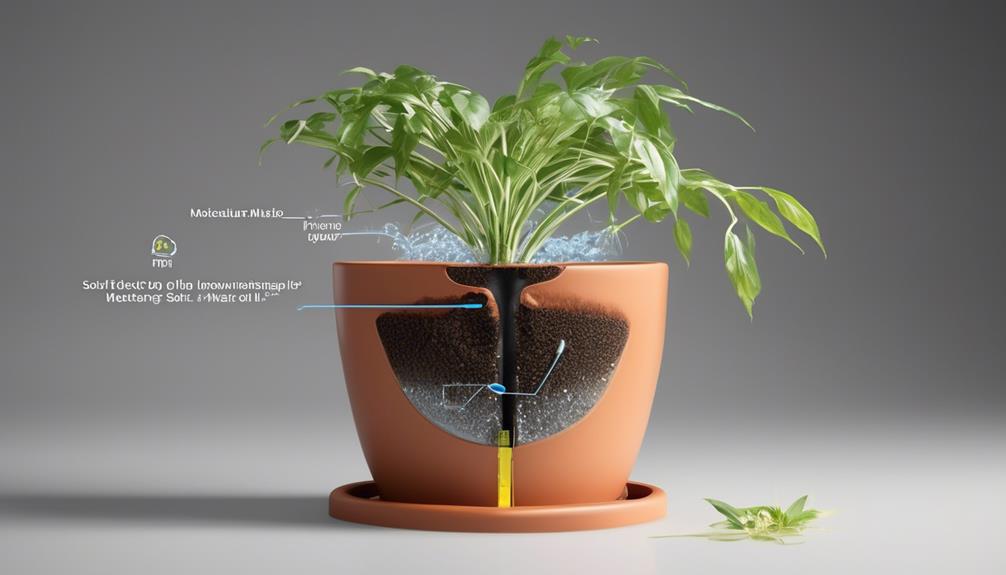
To regulate soil moisture in self-watering plant pots, the wick and capillary action work in tandem to maintain consistent hydration levels for optimal plant growth. The wick, made of a porous material, draws water from the reservoir through capillary action. This water is then distributed to the surrounding soil, ensuring that the plant's roots have access to moisture as needed.
Here's how the irrigation system accomplishes soil moisture regulation:
- Continuous Water Supply: The wick continuously supplies water to the soil, preventing it from becoming too dry or waterlogged.
- Root Absorption: The soil moisture is maintained at an optimal level for the plant's roots to absorb, promoting healthy growth.
- Balanced Hydration: The self-watering system prevents fluctuations in soil moisture, providing a balanced and stable environment for the plant.
- Adaptation to Watering Schedule: The wicking action enables the plant to draw water based on its needs, aligning with its natural watering schedule.
This precise regulation of soil moisture ensures that the plant receives consistent hydration, reducing the risk of over or underwatering. The self-watering mechanism effectively mimics natural conditions, serving the plant's needs while alleviating the burden of constant monitoring and manual watering for the caretaker.
Benefits of Self-Watering Pots
Self-watering pots provide an efficient and reliable method for maintaining consistent soil moisture levels, promoting healthier plant growth with minimal effort. These pots offer significant benefits, including water conservation and enhanced plant health.
The self-watering system reduces water wastage by delivering moisture directly to the plant's roots, minimizing evaporation and runoff. This not only saves water but also promotes sustainable gardening practices. Additionally, by ensuring that plants receive the right amount of water at all times, self-watering pots contribute to the overall health and vitality of the plants. Consistent moisture levels help prevent issues such as underwatering or overwatering, which can stress or even kill plants.
Moreover, the convenience and time-saving aspects of self-watering pots are undeniable. With these pots, the need for frequent watering is greatly reduced, making them ideal for individuals with busy schedules or those who may not have easy access to their plants every day.
Frequently Asked Questions
Can Self-Watering Pots Be Used for All Types of Plants, Including Succulents and Cacti?
Yes, self-watering pots can be used for all types of plants, including succulents and cacti.
The benefits of self-watering pots for succulents and cacti include consistent moisture levels and reduced risk of overwatering.
When comparing self-watering pots to traditional watering methods, they provide a more controlled and efficient way to water these plants, helping to mimic the natural dry periods that these plants are accustomed to in their native environments.
Are There Any Special Maintenance Requirements for Self-Watering Pots, Such as Cleaning or Replacing Parts?
When it comes to maintaining self-watering pots, regular cleaning is essential to prevent mold and mineral buildup. Use a mild soap solution and rinse thoroughly.
Replacement frequency varies depending on the pot's components, but generally, the wick and soil might need changing every 6-12 months. The reservoir and other parts may need occasional inspection and replacement.
Following these cleaning methods and replacement schedules ensures optimal performance and plant health.
Can Self-Watering Pots Be Used Outdoors, and if So, How Do They Handle Different Weather Conditions?
Outdoors, self-watering pots are durable and can handle various weather conditions. They're designed to regulate watering frequency, making them ideal for outdoor use.
The pots are equipped with a water reservoir and a wicking system, ensuring plants receive consistent moisture. This feature reduces the need for frequent watering and helps plants thrive in changing outdoor environments.
The pots are a convenient and reliable option for maintaining healthy plants in outdoor settings.
Are There Any Potential Drawbacks to Using Self-Watering Pots, Such as Overwatering or Root Rot?
Sure, potential drawbacks of using self-watering pots include overwatering and root rot due to improper drainage. These pots require careful maintenance to prevent excess moisture buildup, which can harm plant roots.
However, with proper monitoring and adjustments, these issues can be mitigated. Regularly checking the soil moisture and adjusting the water levels accordingly can help prevent overwatering and root rot, ensuring healthy plant growth.
How Long Do the Self-Watering Mechanisms Typically Last Before Needing to Be Replaced or Repaired?
Sure,
Self-watering mechanisms typically last for several years before needing repair or replacement. Factors like the quality of the mechanism, frequency of use, and maintenance can impact long-term performance.
Regular cleaning and occasional part replacement can extend the lifespan. However, if the mechanism fails, it may need repair or replacement.
– Are Self Watering Plant Pots Effective for Keeping Plants Healthy?
Yes, self watering plant pots are effective for keeping plants healthy. These pots provide a consistent supply of water to the plants, preventing both over-watering and under-watering. This helps to create an optimal environment for plant growth and ensures that the plants remain healthy and vibrant.
Conclusion
In conclusion, self-watering plant pots provide a convenient and efficient way to ensure your plants are properly hydrated.
The reservoir system uses capillary action to deliver water to the soil, regulating moisture levels and reducing the need for frequent watering.
With this innovative solution, your plants can thrive without the constant worry of over or under watering, creating a lush and vibrant garden oasis.

